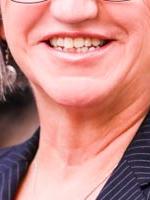


“It's a dangerous business, Frodo, going out your door. You step onto the road, and if you don't keep your feet, there's no knowing where you might be swept off to.”
Our purpose is to entice teachers, especially elementary teachers, to take brave but exciting steps into the unknown: to create lessons where students discover new ideas and find relevance at the junctions where disciplines converge. In this session, we combine Language Arts, Science, Technology, Art, and Mathematics using paper circuits, but will provide space for teachers to discuss and ideate with each other.
Elementary teachers’ instructional time is dominated by Literacy and Mathematics, leaving limited time for other subjects such as Science, Social Studies, Technology, and the Arts. During this session, participants will learn by example in a lesson weaving in concepts from national standards from disparate disciplines. The lesson is based on K-5 Language Arts skills and standards, and intentionally embeds other subjects.
Participants will play with paper circuits, a low-voltage circuit created on cardstock or cardboard using copper tape, LEDs, a coin-cell battery, markers or crayons, and imagination. Presented with research findings, participants will understand the importance of a playful mindset in learning.
Participants will be nudged out of their comfort zones, and reflect on how their experience mimics that of their students. Relatedly, participants will observe lessons in vulnerability, and the strength, joy, and connectedness that arise from it.
Participants will be encouraged to design lessons and activities that enable students to draw from their own experiences and incorporate their own stories into their creations.
Participants will begin to imagine new partnerships and collaborative teams from which both they and their students will learn and expand beyond traditional ways of thinking.
Participants will walk away with new knowledge, physical creations, plans to execute lessons in the classroom, supply lists, contacts with others, and a newfound confidence and inspiration.
1) Introductions (7 minutes)
Of presenters
Brief polls of audience
2) Setting the stage: WHY converge subjects? (8 minutes)
3) Demo lesson with paper circuits (35 minutes)
HOW might you effectively converge subjects?
Ideate and Play!
Participants work with each other to develop classroom lessons
4) Reflection and wrap up (10 minutes)
https://www.energy.gov/sites/default/files/2019/05/f62/STEM-Education-Strategic-Plan-2018.pdf
https://www.nsf.gov/crssprgm/nano/reports/ConvergenceEducation.pdf
https://brill.com/view/title/54614?language=en